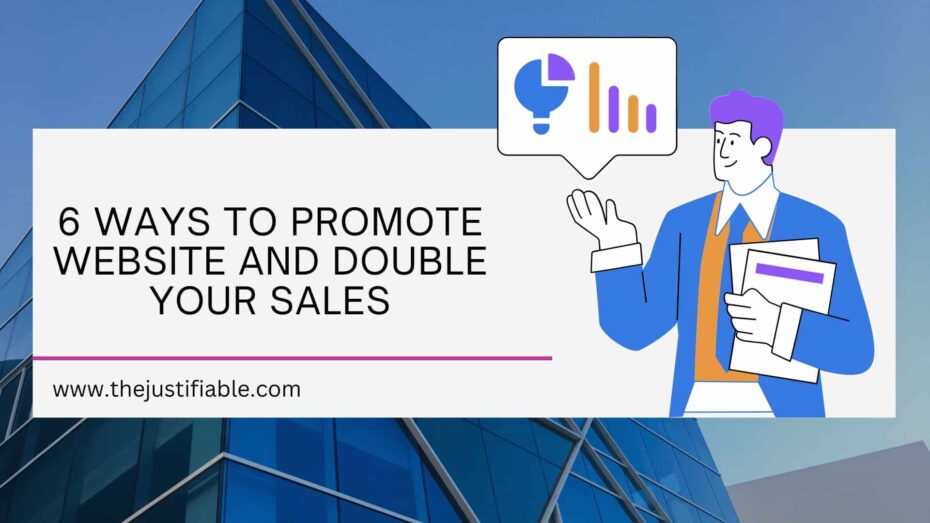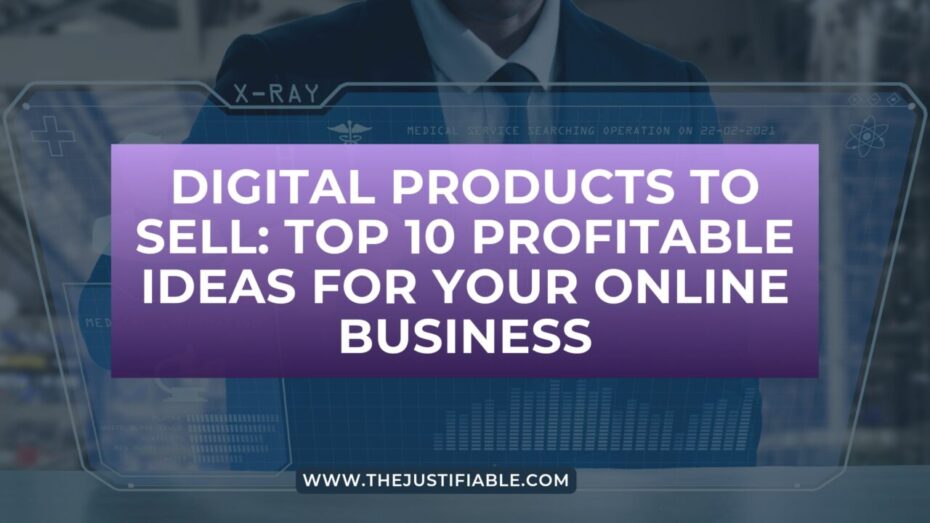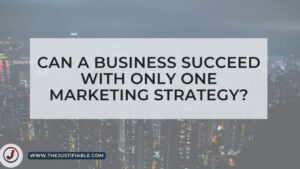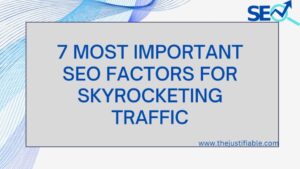Are you looking for dynamic strategies to promote website and significantly enhance your sales figures? Do you wonder how some businesses manage to double their sales by leveraging their online presence effectively? In the vast expanse of the digital marketplace, standing out and attracting your target audience can seem like a daunting task. Yet, the key to unlocking this potential lies in mastering the art of website promotion.
Promoting your website involves a multifaceted approach that goes beyond mere visibility. It’s about creating a connection with your audience, offering them value that resonates with their needs and interests. This strategy not only draws them to your site but also encourages engagement, building a foundation of trust and loyalty. Such an approach ensures that your website isn’t just seen but remembered and revisited, paving the way for increased sales and business growth.
By implementing the six powerful techniques discussed in this guide, you will learn not only to attract traffic but to convert this traffic into loyal customers. These methods are designed to be actionable and effective, regardless of the size or industry of your business. From my perspective, the journey to doubling your sales starts with a solid understanding of these promotional strategies. Each tactic, when applied diligently, has the potential to transform your online presence, making your website a powerhouse for generating sales.
1. Leverage Social Media Magic for Website Promotion
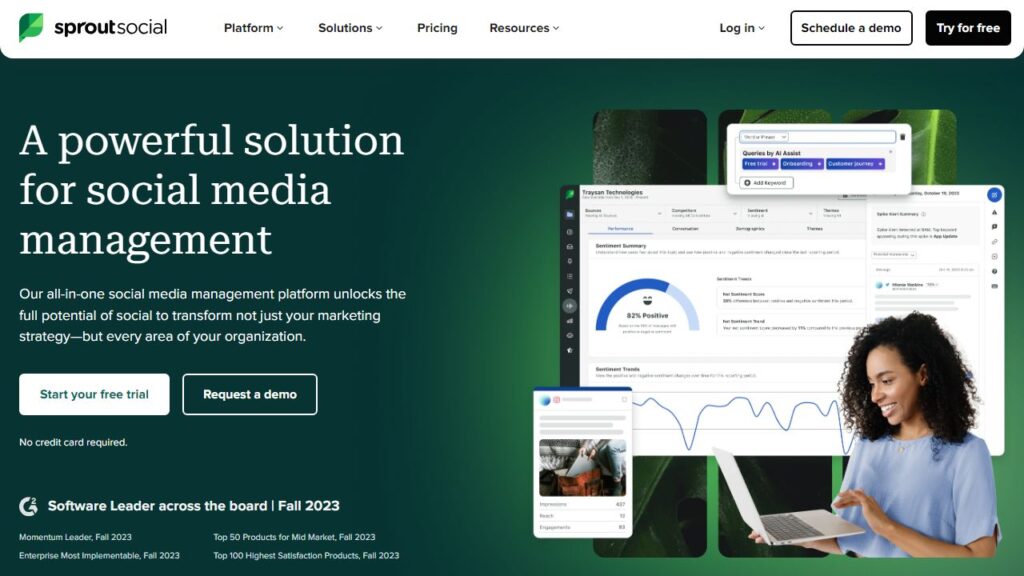
In today’s digital landscape, social media stands as the bustling marketplace versus the quiet library that is your website. Both are invaluable, yet they serve different purposes in the journey of engaging your audience. To promote your website effectively, tapping into the magic of social media is not just recommended; it’s essential. It’s the bridge that connects your content with the world, inviting them into your digital domain where deeper engagement happens.
Social media platforms offer a unique advantage by allowing personalized engagement with your audience. This isn’t just about broadcasting your message but creating a two-way conversation that adds value and builds relationships. Through targeted content, live interactions, and timely responses, you turn passive observers into active participants. This dynamic interaction fosters a community around your brand, transforming your social media presence into a powerful catalyst for website traffic.
Moreover, social media channels are a goldmine for analytics and insights. By understanding the performance of your posts, the preferences of your audience, and the overall engagement trends, you can refine your strategy to be more effective. Every like, comment, and share is a clue to what your audience values, allowing you to tailor your content and promotional efforts to meet their needs. In my view, leveraging social media isn’t just about to promote website; it’s about creating an ecosystem where your brand thrives, driven by genuine connections and engagement.
Crafting Compelling Content That Captivates Audiences
Creating content that resonates with your audience is akin to preparing a gourmet meal for friends; it’s crafted with care, tailored to preferences, and served with a personal touch. Compelling content is the cornerstone of engaging your audience on social media. It’s what stops the scroll, sparks interest, and encourages clicks through to your website. This content comes in many forms, from insightful blog posts and engaging videos to eye-catching infographics and interactive polls.
The key to crafting content that captivates is understanding your audience deeply. What are their pain points? What do they find entertaining, educational, or inspiring? This knowledge allows you to create content that speaks directly to their interests and needs, making your social media channels a go-to source for valuable information. It’s not just about pushing your products or services; it’s about adding real value to their lives through your content.
Personalizing your content to reflect your brand’s voice and ethos is also crucial. It helps in building a consistent brand image that your audience can relate to and trust. Sharing stories, behind-the-scenes insights, and customer testimonials can make your brand more relatable and strengthen the connection with your audience. From my perspective, the art of crafting compelling content lies in its ability to engage, educate, and entertain, making it an irresistible gateway to your website.
Utilizing Hashtags to Amplify Your Reach
Think of hashtags as the signposts that guide users to your content amidst the vastness of social media. They are not just symbols; they are powerful tools that can significantly amplify your reach. By incorporating relevant hashtags into your posts, you make your content discoverable to a wider audience, beyond just your followers. This is particularly effective for tapping into niche markets or joining trending conversations, thereby increasing the visibility of your brand and website.
Strategic use of hashtags involves a mix of popular, niche, and branded tags. While popular hashtags can increase your content’s visibility, niche hashtags can help you reach a more targeted audience interested in specific topics. Branded hashtags, on the other hand, cultivate a sense of community and make it easier for users to find content related to your brand. It’s about finding the right balance that aligns with your promotional goals and audience interests.
Analyzing the performance of different hashtags and adapting your strategy accordingly is crucial for maximizing their potential. This continual optimization process ensures that your content stays relevant and visible to those who are most likely to engage with it. In my honest opinion, effectively utilizing hashtags is akin to casting a wider net in the vast ocean of social media, greatly enhancing your chances of capturing the attention of potential visitors to your website.
Engaging with Your Community to Build Loyalty
Building a community around your brand on social media is like nurturing a garden; it requires time, dedication, and genuine care. Engagement is the sunlight that allows this community to grow and thrive. It’s not just about posting content; it’s about fostering a two-way dialogue with your audience, responding to comments, asking for feedback, and participating in conversations. This level of interaction shows that you value your audience’s opinions and see them as more than just potential customers.
Creating exclusive content for your social media followers or offering them first access to new products, services, or content can further strengthen this bond. It makes them feel valued and part of an exclusive club, increasing their loyalty to your brand. Additionally, user-generated content, such as customer reviews or photos, can be incredibly powerful in building trust and authenticity. It shows prospective customers that your brand is loved and trusted by others, encouraging them to visit your website and explore what you have to offer.
In my experience, the key to building and maintaining a loyal community lies in consistency and authenticity. Regularly engaging with your audience, showing appreciation for their support, and providing them with valuable content creates a strong, loyal community. This community not only supports your brand but also acts as advocates, spreading the word about your website and products. From my perspective, engaging with your community is not just a strategy; it’s the very essence of building a successful, long-lasting brand.
2. Optimize Your SEO to Skyrocket Visibility
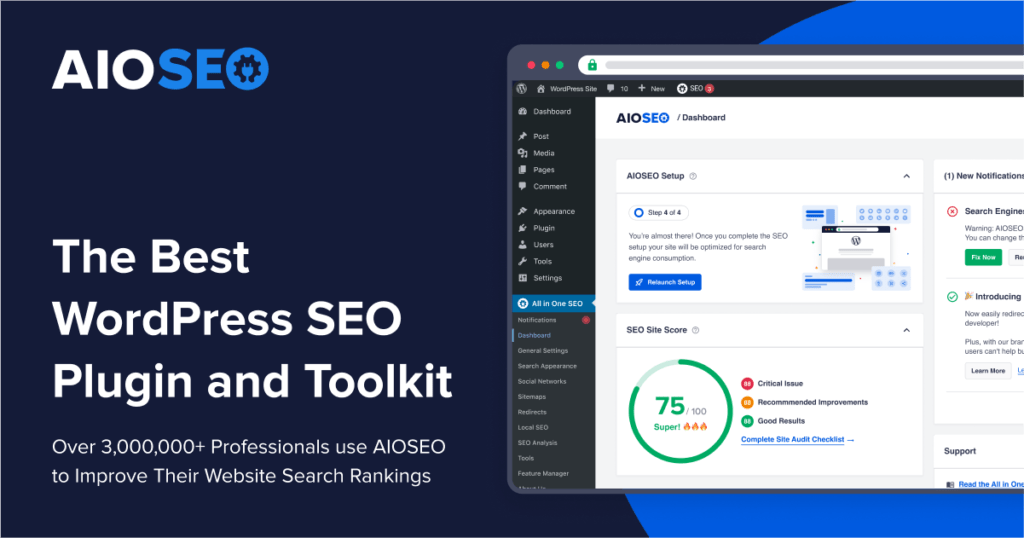
A staggering 93% of online experiences begin with a search engine, highlighting the critical role of SEO in your website’s visibility. To promote website and double your sales, optimizing your SEO strategy is not just beneficial; it’s imperative. SEO serves as the compass that guides potential customers through the vast digital landscape directly to your website. It’s about making your site easily discoverable by those who are looking for what you offer.
Optimizing your website for search engines involves understanding and implementing a range of techniques from keyword optimization to technical SEO. This ensures your site is not only visible but also appealing to search engine algorithms. The goal is to rank higher in search results, making it more likely for users to click through to your site. Remember, visibility is the first step in converting a searcher into a visitor, and eventually, a customer.
Moreover, a well-optimized website communicates to search engines the relevance and authority of your content, further boosting your ranking. It involves a continuous process of refining and updating your strategies to keep up with algorithm changes and evolving user behaviors. In my view, SEO is not a one-time task but a long-term investment in your website’s visibility and, by extension, your business’s success. It’s about laying a solid foundation that supports all other digital marketing efforts.
Keyword Mastery: The Heartbeat of SEO Success
Keywords are the linchpins of effective SEO; they connect user queries with relevant content on your website. The art of keyword mastery involves identifying and integrating the terms and phrases that your target audience uses in their search queries. It’s not just about the most popular keywords but finding the right balance between volume, relevance, and competition. This strategic selection ensures that your website attracts traffic that is not only high in quantity but also high in quality.
Incorporating these keywords naturally into your content, titles, meta descriptions, and URLs enhances your website’s visibility and relevance in search results. However, keyword stuffing, or overusing keywords, can have the opposite effect, penalizing your site in rankings. Thus, the key lies in integrating them smoothly into high-quality, valuable content that addresses the needs and questions of your audience.
Understanding the intent behind search queries is also crucial. This means going beyond the surface level of keywords to grasp what users are really looking for. Are they seeking information, looking to make a purchase, or comparing options? By aligning your content with user intent, you not only improve your SEO performance but also increase the likelihood of conversion. In my honest opinion, mastering keywords is about understanding and speaking the language of your audience, making it a fundamental pillar of successful SEO.
Backlink Strategies to Boost Your Site’s Authority
Backlinks, or links from other websites to yours, act as votes of confidence in the eyes of search engines. A robust backlink profile signals to search engines that your content is valuable, credible, and authoritative, thereby improving your website’s ranking. However, not all backlinks are created equal. The quality, relevance, and the context of the linking site play a critical role in determining the value of a backlink.
Developing a strategic approach to earning high-quality backlinks involves creating content that is genuinely useful and share-worthy. This can include original research, comprehensive guides, or insightful analysis that others in your industry would want to reference. Additionally, outreach to relevant websites, guest blogging, and participating in industry forums can also contribute to building a strong backlink profile.
It’s important to note that ethical practices in building backlinks cannot be overstated. Engaging in or falling for schemes that promise quick gains can do more harm than good, potentially leading to penalties from search engines. In my view, a thoughtful and organic approach to earning backlinks not only enhances your SEO but also contributes to building long-term relationships within your industry.
Enhancing User Experience to Climb SEO Rankings
User experience (UX) has become a critical component of SEO, with search engines increasingly prioritizing sites that provide a smooth, engaging, and efficient experience for users. Factors such as page load speed, mobile responsiveness, navigational ease, and content readability directly impact your website’s ability to rank well. Essentially, if users enjoy interacting with your site, search engines take that as a positive signal.
Improving UX starts with understanding your users’ needs and behaviors. This includes analyzing how they navigate your site, what content they engage with, and where they may encounter frustrations. Tools like heatmaps, user feedback, and performance analytics can offer invaluable insights into how to enhance your site’s usability and design.
Moreover, ensuring your website is accessible to all users, including those with disabilities, not only broadens your audience but also reflects positively on your brand’s values. In my experience, prioritizing user experience is not just about SEO rankings; it’s about building a site that genuinely serves and satisfies your visitors. After all, a satisfied visitor is more likely to become a repeat visitor—and, eventually, a loyal customer.
3. Harness the Power of Email Marketing Campaigns
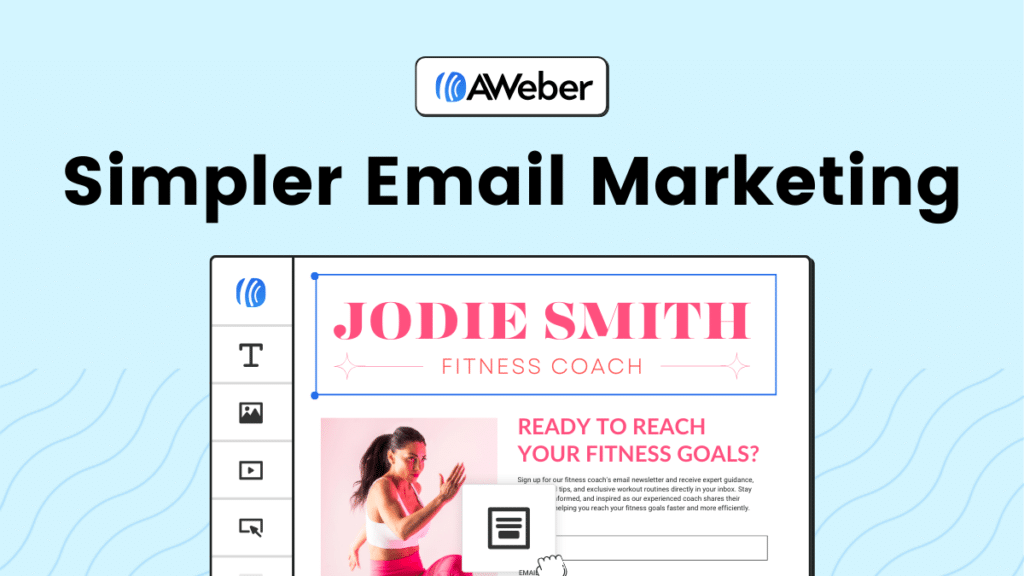
“Email has an ability many channels don’t: creating valuable, personal touches—at scale.” This principle highlights the unmatched potential of email marketing to promote website and double your sales. By harnessing the power of email marketing campaigns, you can directly communicate with your audience, delivering tailored messages that drive engagement and conversions. The personal nature of email allows for a deep connection with your audience, making it a crucial tool in your digital marketing arsenal.
Effective email marketing goes beyond sending generic messages to your entire list. It involves understanding your audience’s preferences, behaviors, and needs to create targeted content that resonates with them. This strategic approach ensures that your emails are not just seen but also opened and acted upon. Moreover, integrating your email campaigns with your overall marketing strategy amplifies their effectiveness, driving traffic to your website and boosting sales.
Furthermore, the versatility of email marketing means it can serve multiple purposes—from nurturing leads and promoting new products to sharing valuable content and exclusive offers. Each email is an opportunity to add value to your audience’s life and guide them closer to making a purchase. It’s about building a relationship with your subscribers, where each email adds a layer of trust and credibility to your brand.
Crafting Irresistible Email Content
“Speak to your audience in their language about what’s in their heart,” the essence of crafting irresistible email content. It’s not just about what you say but how you say it. The content of your emails should resonate with your audience, addressing their needs, challenges, and interests. This connection is what transforms a regular email into an irresistible one that recipients are eager to open and read.
Creating compelling email content starts with a captivating subject line. This is your first, and sometimes only, opportunity to grab your audience’s attention. A subject line that sparks curiosity, promises value, or evokes emotion is more likely to be opened. From there, the content of your email should deliver on that promise, providing value that keeps the reader engaged. Whether it’s insightful information, an exclusive offer, or a compelling story, your email content should always aim to enrich the recipient’s day.
Personalization plays a key role in making your email content irresistible. Using the recipient’s name is just the beginning. Tailoring the content based on their past interactions, preferences, and behavior makes the email feel like a one-on-one conversation rather than a mass broadcast. This level of personalization fosters a stronger connection between your brand and your audience.
Segmenting Your Audience for Personalized Messages
“Divide and conquer,” a strategy as old as time, applies perfectly to the realm of email marketing through audience segmentation. Segmenting your email list allows you to send more personalized and relevant messages to different groups within your audience. This relevance is key to increasing engagement, as recipients are more likely to interact with content that speaks directly to their interests and needs.
Segmentation can be based on a variety of factors, including demographic information, purchase history, website behavior, or engagement levels. By dividing your audience into these segments, you can tailor your messaging to be more specific. For instance, sending a special offer to repeat customers as a thank you can foster loyalty and encourage further purchases. Similarly, a series of welcome emails to new subscribers can help introduce them to your brand and website in a structured and engaging way.
The power of segmentation lies in its ability to make each recipient feel like the email was crafted just for them. This personal touch significantly increases the chances of your emails being opened and acted upon. Moreover, segmentation also allows for more accurate tracking and analysis of the effectiveness of your campaigns, as you can see how different groups respond to different messages.
Measuring Success Through Analytics
“The goal is to turn data into information, and information into insight,” a principle that underscores the importance of measuring success through analytics in email marketing. Tracking and analyzing the performance of your email campaigns provides you with valuable insights that can inform your strategy and help you make data-driven decisions. Key metrics such as open rates, click-through rates, conversion rates, and unsubscribe rates offer a clear picture of how your emails are performing.
Beyond these basic metrics, delving into more detailed analytics can reveal deeper insights into subscriber behavior and preferences. For example, analyzing which types of content generate the most engagement can guide your content strategy, ensuring that you continue to deliver value that resonates with your audience. Similarly, tracking conversions from email campaigns can help you understand the ROI of your email marketing efforts, guiding budget allocation and strategy adjustments.
Leveraging analytics also means continuously testing and refining your approach. A/B testing different subject lines, content formats, or calls to action can reveal what works best for your audience, allowing you to optimize future campaigns for better results. This iterative process is essential for staying relevant and engaging in the ever-evolving landscape of email marketing.
4. Engage with Influencers to Expand Your Reach
Just as a lighthouse guides ships to safety, influencers can illuminate your brand in the crowded sea of digital content, guiding potential customers to your website. Engaging with influencers is a potent strategy to promote your website and double your sales, leveraging their audience’s trust and reach to amplify your message. From my perspective, the key to a successful influencer collaboration lies in choosing partners whose audience aligns with your target market, ensuring authenticity and resonance in the partnership.
Identifying the right influencers involves more than just considering their follower count; it’s about understanding the engagement and trust they command among their audience. High engagement rates and a loyal following are indicative of an influencer’s ability to sway their audience’s preferences and behaviors. According to my experience, collaborations with influencers who share values and interests with your brand can result in content that feels genuine and compelling to your target audience.
Moreover, successful influencer engagements are built on clear communication and shared goals. Establishing a mutual understanding of expectations, deliverables, and messaging ensures that the collaboration effectively promotes your website while maintaining the influencer’s authenticity. I strongly believe that when both parties are aligned, the content produced not only engages the audience but also drives meaningful traffic to your website, enhancing your brand’s visibility and sales.
Tracking the success of influencer campaigns is crucial for understanding their impact on your website’s traffic and sales. Metrics such as engagement rates, website visits, conversion rates, and ROI from these collaborations provide actionable insights. From my point of view, analyzing these metrics allows you to refine your influencer strategy over time, focusing on partnerships and content types that deliver the best results for your brand.
Identifying the Right Influencers to Promote Website
Identifying the right influencers is akin to finding the perfect ambassador for your brand; it’s about more than just reach—it’s about relevance and resonance. The ideal influencers are those whose content, audience, and values align closely with your brand. This alignment ensures that their endorsement feels authentic, engaging their followers in a way that naturally encourages interest in your website. In my experience, the most successful partnerships are those where the influencer’s audience overlaps significantly with your target demographic, ensuring that your message reaches the right ears.
To effectively identify these influencers, it’s essential to conduct thorough research, looking beyond superficial metrics like follower counts to engagement rates, audience demographics, and content quality. Tools and platforms specializing in influencer analytics can offer valuable insights, helping you to make informed decisions. From my point of view, engaging with influencers who are genuinely interested in your product or service can significantly amplify the authenticity and impact of their promotions.
Furthermore, considering micro-influencers or niche influencers can be a strategic move. Despite having smaller followings, they often boast higher engagement rates and a more dedicated audience, which can be incredibly valuable for brands looking to connect with specific markets. According to my estimation, partnerships with these influencers can offer a higher ROI, especially for brands with niche products or services.
Collaborating for Authentic Engagement
Collaborating with influencers for authentic engagement is like choreographing a dance where both parties move in harmony to the same rhythm, creating a performance that captivates the audience. Authenticity is the cornerstone of any successful influencer collaboration; it ensures that the promotion resonates with the audience and feels more like a recommendation from a trusted friend than an advertisement. I believe that the most effective collaborations are those where the influencer has the freedom to create content that aligns with their unique style while still highlighting the brand’s message.
Open communication between the brand and the influencer is crucial for setting expectations and aligning on goals. This collaboration should include discussions on content format, key messages, and how the product or service fits into the influencer’s content narrative. From my perspective, allowing influencers creative freedom within agreed parameters can lead to more genuine and engaging content that naturally promotes your website.
Moreover, providing influencers with a clear understanding of your brand, product, or service enables them to craft stories or messages that resonate with their audience and authentically promote your website. I suggest that brands should also be open to influencers’ insights and suggestions, as their deep understanding of their audience can enhance the campaign’s effectiveness.
Tracking Influencer Campaign Success
Tracking the success of influencer campaigns is like navigating through a vast ocean with the help of a compass; it guides your strategy, showing you what works and what doesn’t. By setting clear KPIs (Key Performance Indicators) and using analytics tools, you can measure the impact of influencer collaborations on website traffic, engagement, and conversions. These insights are invaluable for understanding the ROI of your influencer marketing efforts and for making data-driven decisions in future campaigns. From my point of view, tracking should go beyond just surface-level metrics like likes and comments to include deeper analytics such as click-through rates, website visits, and conversion rates attributable to the influencer’s content.
Utilizing unique tracking codes or affiliate links for each influencer allows for precise measurement of how much traffic and how many conversions each collaboration brings to your website. This granularity not only helps in assessing the effectiveness of individual influencers but also in understanding which types of content perform best. According to my estimation, such detailed tracking is essential for optimizing your influencer marketing strategy over time, ensuring that you invest in the most impactful collaborations.
Moreover, engaging with influencers in a feedback loop where insights and performance data are shared and discussed can lead to more effective campaigns. This collaboration can help both parties understand what resonates with the audience, refining approaches for future promotions. In my honest opinion, tracking the success of influencer campaigns is not just about measuring outcomes; it’s about learning, adapting, and evolving your strategy to maximize the impact of influencer collaborations on promoting your website and enhancing your brand’s online presence.
5. Invest in Pay-Per-Click (PPC) Advertising
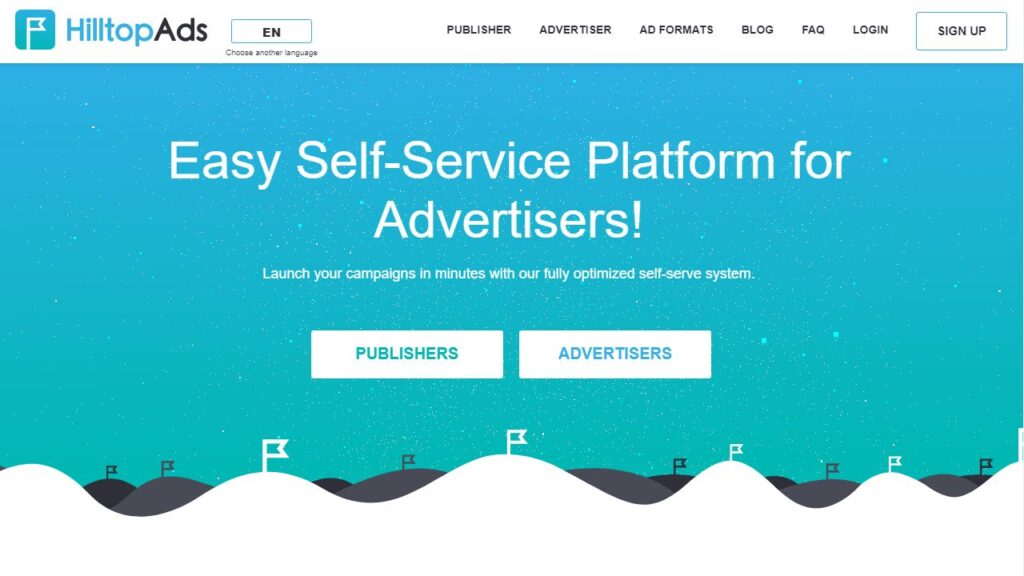
Surprisingly, businesses make an average of $2 in income for every $1 they spend in Google Ads. This statistic underlines the powerful potential of Pay-Per-Click (PPC) advertising in driving targeted traffic to your website and ultimately, enhancing your sales. Investing in PPC allows for precise targeting, from demographics to user behavior, ensuring that your advertisement reaches those most likely to convert. From my perspective, PPC is an indispensable tool in the digital marketing arsenal for businesses aiming to promote their website and amplify their sales efficiently.
The immediacy of PPC advertising sets it apart from organic growth strategies. While SEO and content marketing are essential for long-term growth, PPC can provide immediate visibility and results. This is particularly useful for new product launches or when trying to capitalize on time-sensitive opportunities. According to my estimation, the ability to control your budget, target specific keywords, and measure ROI in real-time makes PPC a highly adaptable strategy to suit various marketing goals and budgets.
Moreover, PPC advertising offers unparalleled insights into customer behavior and preferences. Through the data collected from your campaigns, you can refine your marketing strategies across all channels. In my honest opinion, the analytics provided by PPC campaigns are invaluable in understanding what resonates with your audience, enabling you to make informed decisions that enhance both your PPC campaigns and overall marketing strategy. Investing in PPC is not just about immediate gains in traffic and sales; it’s about gathering insights that fuel long-term growth and success.
Crafting Click-Worthy PPC Advertisements
Crafting click-worthy PPC advertisements is an art that combines creativity with strategic precision. The challenge lies in capturing the essence of your offering in a few compelling words that entice users to click through to your website. From my view, a successful PPC ad not only highlights the unique selling proposition (USP) of the product or service but also addresses a specific need or problem that the target audience faces. This relevance is key to increasing the ad’s click-through rate (CTR).
The use of persuasive and action-oriented language in PPC ads can significantly impact their effectiveness. Words that evoke emotion or create a sense of urgency can motivate users to take action. Moreover, incorporating benefits rather than just features can make your ad more appealing to potential customers. From my perspective, it’s crucial to test different ad copy variations to determine what resonates best with your audience, as this can vary widely across different products and target demographics.
Additionally, the inclusion of keywords in your ad copy is essential for relevance and for matching user search queries. However, it’s important to balance keyword use with the overall message and readability of the ad. In my honest opinion, crafting click-worthy PPC advertisements requires a deep understanding of your audience and the ability to convey your message in a concise and enticing manner. This skill is critical in driving targeted traffic to your website and maximizing the ROI of your PPC campaigns.
Targeting Keywords that Convert
Targeting keywords that convert is the cornerstone of a successful PPC campaign. Surprisingly, a small set of well-chosen keywords can often outperform a vast list of generic ones. The key lies in understanding the intent behind the search queries. Keywords with commercial intent, such as those including “buy,” “deal,” or specific product names, are more likely to lead to conversions. From my experience, focusing on these high-intent keywords can significantly improve the efficiency of your PPC advertising spend.
Long-tail keywords, though they may attract fewer searches, are another goldmine for PPC success. These more specific queries often indicate a user further along in the buying process, looking for exactly what you offer. According to my estimation, targeting long-tail keywords can lead to higher conversion rates and lower competition, making them a cost-effective choice for many campaigns.
Segmenting your keywords and creating specific ad groups for different themes or product categories allows for more personalized ad copy and landing pages, further increasing conversion potential. In my view, the strategic selection and management of keywords require ongoing analysis and adjustment to align with changing search trends and consumer behavior. This dynamic approach ensures your PPC campaigns remain relevant and effective in driving targeted traffic that converts.
Optimizing Landing Pages for PPC Success
The final step in converting clicks into customers lies in optimizing landing pages for PPC success. A landing page that is closely aligned with the ad copy and offers a seamless user experience is crucial for maintaining the momentum from the click through to conversion. From my point of view, each element on the page should be designed with the goal of guiding the visitor toward the desired action, whether it’s making a purchase, signing up for a newsletter, or downloading a white paper.
The relevance of the landing page content to the ad and the targeted keywords is paramount. Users expect to find exactly what was promised in the ad. Therefore, the message, offer, and visuals should be consistent across both. According to my estimation, personalized landing pages that cater to the specific interests and needs of the target audience can dramatically increase conversion rates.
Furthermore, simplifying the design and reducing distractions on the landing page can help focus the visitor’s attention on the call to action (CTA). A clear, compelling CTA button is vital for converting visitors into leads or customers. In my honest opinion, optimizing landing pages is a critical component of PPC advertising success. It’s not just about attracting traffic; it’s about converting that traffic into tangible outcomes for your business.
6. Create Valuable Content to Attract and Retain Visitors
Creating valuable content for your website is like laying down a breadcrumb trail for potential customers to follow, leading them not just to your site but through a journey that captivates and retains their attention. In the vast expanse of the internet, where countless websites vie for attention, offering content that provides genuine value is what sets you apart and cements your place in the minds and bookmarks of your audience. From my perspective, the creation of high-quality, relevant content is the cornerstone of any successful strategy to promote your website and double your sales.
Valuable content meets the needs and interests of your audience, answering their questions, solving their problems, and offering insights they can’t find elsewhere. This requires a deep understanding of your audience’s demographics, preferences, and pain points. Tailoring your content to address these areas not only draws visitors to your site but also encourages them to stay, explore, and engage with your brand. According to my estimation, content that resonates with your audience fosters trust and loyalty, which are crucial for converting visitors into customers.
Moreover, consistently updating your website with fresh content keeps your audience coming back for more, enhancing your site’s SEO rankings and online visibility. It’s a virtuous cycle: the more valuable your content, the higher your site ranks in search results, which in turn attracts more visitors. In my honest opinion, investing in creating valuable content is not just about immediate gains in traffic. It’s about building a long-term relationship with your audience, establishing your brand as an authority in your field, and ultimately driving sustainable growth in sales.
Blogging: A Tool to Drive Traffic and Engage Users
Blogging is akin to opening the doors of your brand’s universe to the world, inviting visitors to step inside and explore. This versatile tool serves not only to drive traffic to your website but also to deeply engage users with insightful, relevant content that speaks directly to their interests and needs. In my view, a well-maintained blog is a powerful platform for establishing your brand’s voice and authority, showcasing your expertise, and building a community around your products or services.
Each blog post is an opportunity to address the specific questions, challenges, and interests of your audience, providing solutions and insights that enrich their lives or businesses. This level of engagement is invaluable for building trust and loyalty, encouraging visitors to return to your site and share your content with others. From my perspective, the key to successful blogging lies in understanding your audience and consistently delivering content that adds value to their day-to-day lives.
Additionally, integrating keywords naturally into your blog posts can enhance your SEO efforts, making your website more visible in search engine results. However, it’s crucial that SEO never compromises the quality or readability of your content. I strongly believe that the primary focus of blogging should always be on meeting the needs of your audience. By doing so, you not only improve your site’s SEO but also foster a genuine connection with your readers, which is the ultimate goal of content marketing.
Video Content: Engage More with Less
In today’s fast-paced digital landscape, video content stands out as a beacon of engagement, offering a way to capture the attention of your audience more effectively and memorably than text alone. The power of video lies in its ability to convey complex ideas, emotions, and stories in a format that’s both easily digestible and highly shareable. From my point of view, incorporating video content into your website is a strategic move to enhance user engagement, retain visitors, and ultimately, drive conversions.
Videos have the unique ability to humanize your brand, providing a face and voice to your message and fostering a deeper connection with your audience. Whether it’s through how-to guides, product demos, customer testimonials, or behind-the-scenes glimpses, video content can provide value in a manner that is both informative and entertaining. According to my estimation, this blend of education and entertainment encourages viewers to spend more time on your site and engage with your brand on a more personal level.
The versatility of video also means it can be repurposed across multiple platforms, from social media to email campaigns, maximizing your content’s reach and impact. However, it’s important to remember that quality trumps quantity. In my honest opinion, investing in well-produced, thoughtful video content that truly resonates with your audience is more beneficial than producing a high volume of lower-quality videos. By focusing on quality and relevance, you can leverage video content to significantly enhance your website’s appeal and effectiveness in attracting and retaining visitors.
Infographics: Simplifying Complex Information
Infographics have the remarkable ability to transform complex information into visually appealing, easy-to-understand formats that captivate and educate your audience. In a world where users are bombarded with information, infographics stand out by delivering valuable insights in a concise and engaging manner. From my point of view, incorporating infographics into your content strategy is an effective way to highlight key data, trends, and insights related to your industry, making your website a go-to resource for your audience.
The visual nature of infographics makes them highly shareable across social media platforms, increasing your content’s visibility and driving traffic back to your site. This shareability is a powerful tool for expanding your reach and attracting new visitors to your website. According to my estimation, when infographics are designed with your audience’s needs and preferences in mind, they can play a pivotal role in simplifying complex subjects, making your content more accessible and appealing to a wider audience.
Furthermore, infographics can enhance the user experience on your website by breaking up text-heavy content and providing a visual summary of important points. This not only makes your site more visually appealing but also improves content retention and understanding among your audience. In my honest opinion, the strategic use of infographics is a testament to the adage that a picture is worth a thousand words. By distilling complex information into digestible visual formats, you can significantly improve the value and appeal of your website’s content.
Transforming Strategies into Sales
In the journey to promote your website and double your sales, the strategies we’ve explored serve as a comprehensive roadmap. From leveraging the magic of social media to harnessing the precision of PPC advertising, each tactic is a gear in the intricate machinery designed to amplify your online presence and sales. I believe that understanding and applying these strategies can transform the way you approach digital marketing, turning potential visitors into loyal customers.
Implementing these strategies requires a blend of creativity, analytics, and patience. By crafting valuable content, optimizing for search engines, engaging with influencers, and more, you’re laying down a foundation that attracts and retains a dedicated audience. From my perspective, it’s crucial to remember that these methods are interconnected, each reinforcing and amplifying the effects of the others. This synergy is what ultimately drives traffic to your website and converts that traffic into sales.
Moreover, the digital landscape is ever-evolving, making it essential to stay informed and adaptable. The techniques that are effective today may need to be tweaked or overhauled tomorrow. According to my estimation, the key to sustained success lies in continuous learning, experimenting, and refining your approach based on the data you collect. By keeping your strategies dynamic and responsive to changes in consumer behavior and technological advancements, you can maintain a competitive edge and continue to see growth in your sales.
Implementing These Techniques for Maximum Impact
The implementation of these strategies begins with a detailed plan that outlines your goals, target audience, and the specific tactics you intend to use. This plan should be flexible, allowing for adjustments based on the performance data you gather. From my point of view, starting with a clear understanding of your audience and what drives them will inform every aspect of your strategy, from the type of content you create to the platforms you focus on.
Investing in the right tools and technologies can significantly enhance the efficiency and effectiveness of your efforts. Whether it’s SEO tools, social media management platforms, or analytics software, these resources can provide invaluable insights and streamline your marketing processes. In my experience, the judicious use of technology not only saves time but also allows for more precise targeting and personalization, which are key to engaging your audience and driving conversions.
Lastly, fostering a culture of innovation and experimentation within your team can lead to breakthroughs in how you promote your website and engage your audience. Encouraging creativity and a willingness to try new approaches can uncover unique opportunities and strategies that set your brand apart. In my honest opinion, the most impactful implementations come from a combination of strategic planning, leveraging technology, and nurturing a mindset that embraces change and innovation. By following these steps, you’re well on your way to not just meeting your sales goals but exceeding them.
Frequently Asked Questions (FAQ)
How can I effectively promote my website on social media?
To promote your website on social media, focus on creating engaging content that resonates with your target audience. Utilize hashtags to increase visibility and actively engage with your followers through comments and direct messages. Consistency in posting and using analytics to refine your strategy are also key.
What are the best SEO practices to boost my website’s visibility?
Optimize your website by conducting keyword research, improving your site’s loading speed, and ensuring mobile-friendliness. Backlinks from authoritative sites, along with high-quality, relevant content, also significantly enhance your SEO performance.
How can email marketing help promote my website?
Email marketing allows you to reach your audience directly with personalized messages. Craft compelling subject lines, segment your audience for targeted campaigns, and use analytics to track performance and refine your approach.
What role do influencers play in website promotion?
Influencers can extend your reach by promoting your website to their dedicated followers. Choose influencers whose audience aligns with your target market for authentic engagement and track the campaign’s success through metrics like conversion rates.
How can PPC advertising drive traffic to my website?
PPC advertising allows for precise targeting of keywords and demographics. Craft ads that are compelling and relevant, and use analytics to track and optimize the performance of your campaigns.
What type of content is most effective for website promotion?
Blogging, video content, and infographics are highly effective. They should provide value, solve problems, or entertain your audience. High-quality content not only attracts visitors but also encourages sharing, which broadens your reach.
How important is mobile optimization for website promotion?
Mobile optimization is crucial as a significant portion of users access websites via mobile devices. Ensure your site is responsive, loads quickly, and offers a seamless user experience to avoid losing potential visitors.
Can social media alone double my website sales?
While social media can significantly increase traffic and brand awareness, combining it with SEO, email marketing, and other strategies ensures a more comprehensive approach to doubling sales.
What are the most effective tools for tracking website promotion success?
Use tools like Google Analytics for tracking website traffic, engagement metrics, and conversion rates. Additionally, PPC platforms provide their own analytics for campaign performance, helping you adjust your strategies in real time.
How can I ensure that my website promotion strategy remains effective over time?
Continuously analyze performance data, stay updated on industry trends, and be willing to adapt your strategies. Regularly refreshing content, updating SEO practices, and experimenting with new promotional methods keep your strategy effective.


